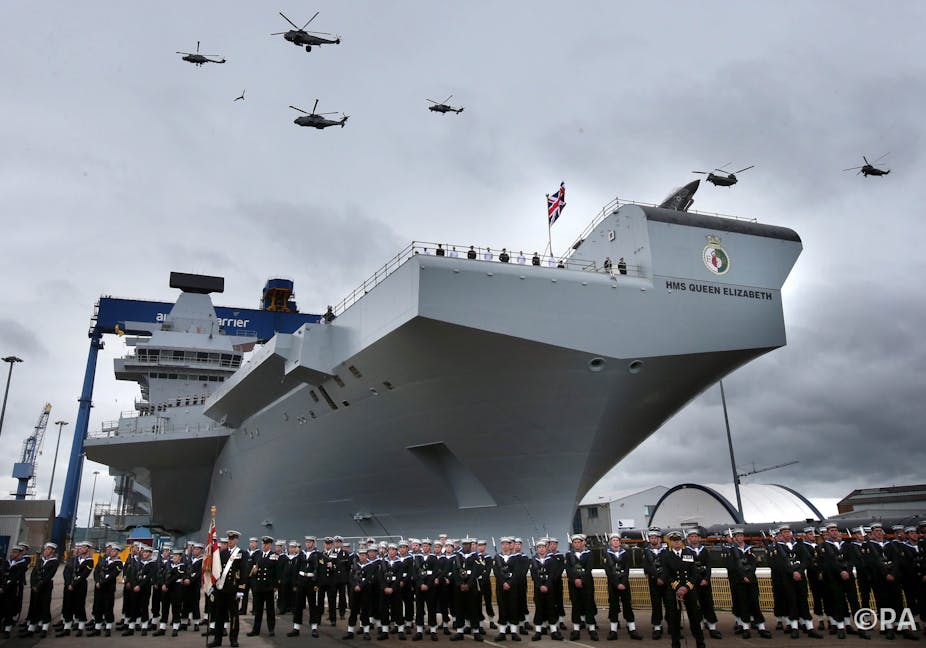We already spend 6% of our budget on defence. I think that that proportion can be spent more wisely.
Leanne Wood, Plaid Cymru leader, during the BBC Challenger’s debate.
The claim that the UK spends 6% of its national budget on defence can be readily checked. Looking at past expenditure, the claim was on the low side: the actual figure for 2013-2014 put defence spending at 7.5% of UK public expenditure – or £49.9 billion of a total £664.1 billion.
Plaid Cymru have pointed to the government’s total managed expenditure, which was at £714.3 billion in 2013-14, putting the percentage spent on defence 7%.
In his 2015 budget, chancellor George Osborne set out figures from the Office for Budget Responsibility looking at the proportion of £743 billion in total managed expenditure for 2015-16 spent on different sectors. Defence spending is estimated at £45 billion – just over 6% of the total.
However, defence spending data is usually presented differently, with the share of GDP often used as an indicator of a nation’s defence burden. In 2014, UK defence spending was at 2.2% of GDP, according to the 2015 SIPRI Military Expenditure Database.
In the UK, the long-term trend for defence spending as a share of GDP has been downwards. In 1953, during the Korean War, the UK share was 9.9%; by 1982, during the Falklands conflict, it was 5.3% and at the end of the Cold War in 1990, it stood at 3.8%. The declining share figures have resulted from a succession of defence reviews as the UK has adjusted its role and commitments.
The UK’s 2014 share figure compares favourably with other NATO nations as the graph below shows.

The relatively high share of GDP spent by the UK on defence reflects the country’s world military role. This has led to the acquisition of a nuclear deterrent (Trident), nuclear-powered submarines, Type 45 destroyer warships, aircraft carriers, F-35 carrier-based aircraft together with strategic air tankers, Typhoon jets, heavy lift and attack helicopters and an army with an expeditionary role.
These are costly capabilities. For example, the Typhoon programme will cost £18.1 billion, the strategic air tanker £11.4 billion, the Astute submarines £9.4 billion and the total equipment procurement programme is estimated to cost some £69 billion between 2014 and 2024.
The share of GDP spent on defence is just one measure of a nation’s defence effort. Other measures include the level of defence spending in real terms (adjusted for inflation), the numbers of military personnel and the numbers of front-line equipment such as fast jet squadrons, warships and tanks. International comparisons can be made using the levels of defence spending in real terms as shown in the table below. On this basis, the UK ranks sixth in the world.

However, levels of defence spending and the share of GDP do not measure UK defence output in the form of peace, protection and security. There is a complete absence of any indicator of the monetary value of defence output for any nation in the world. Instead, defence output is often assumed to be equivalent to defence expenditure.
Verdict
The claim that the UK spends 6% of its budget on defence is on the low side and for 2013-14, it was actually 7%. Going by OBR estimations, the UK could spend 6% of its public expenditure for 2015-16 on defence. But usually, defence burdens are measured by the share of national output or GDP spent on defence, rather than shares of the national budget.
Review
This response to the question is careful and I agree with the verdict. At first sight the 6% figure looks high because most of the debate in the election has been around the commitment to spend 2% of GDP on defence made to NATO. But the 2% is a percentage of GDP and the 6% is a percentage of the budget: government expenditure. The difference indicates the importance of knowing what is in the bottom line of a percentage.
Whether that money could be spent more wisely is a matter of judgement and there has been considerable debate about the appropriate structure of the forces: how much should be spent on army, navy and air force. And within those totals, there are also debates on the relative importance of different elements such as Trident replacement and purchase of F35 aircraft for the carriers.
This article was updated on April 21 with additional information on total managed expenditure for 2013-14.
Click here to request a check. Please include the statement you would like us to check, the date it was made, and a link if possible. You can also email factcheck@theconversation.com

